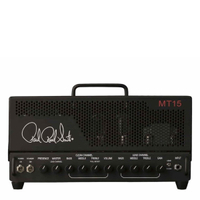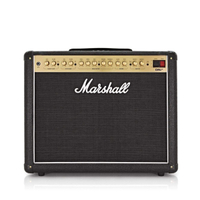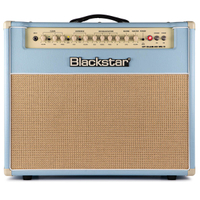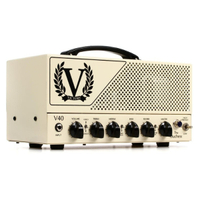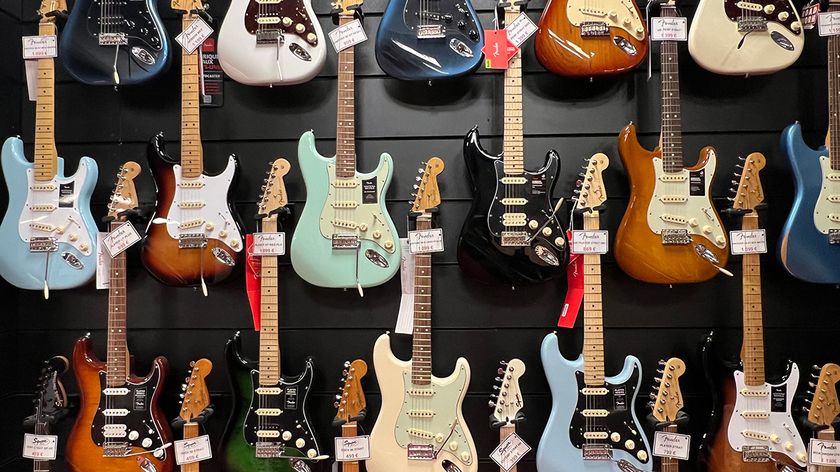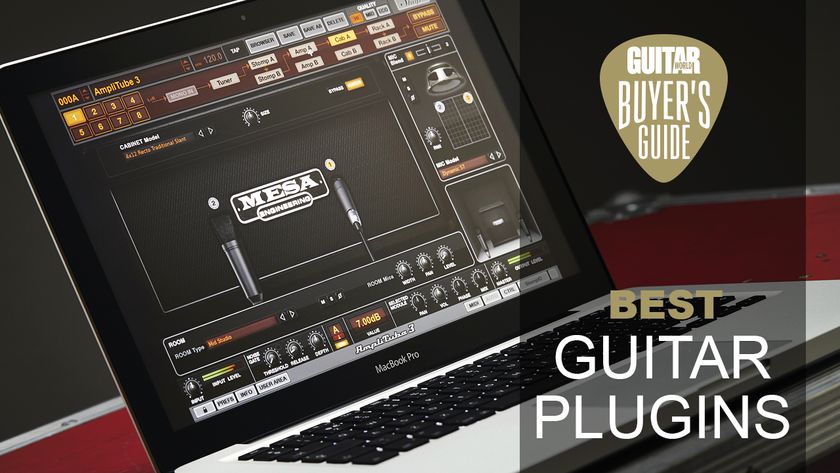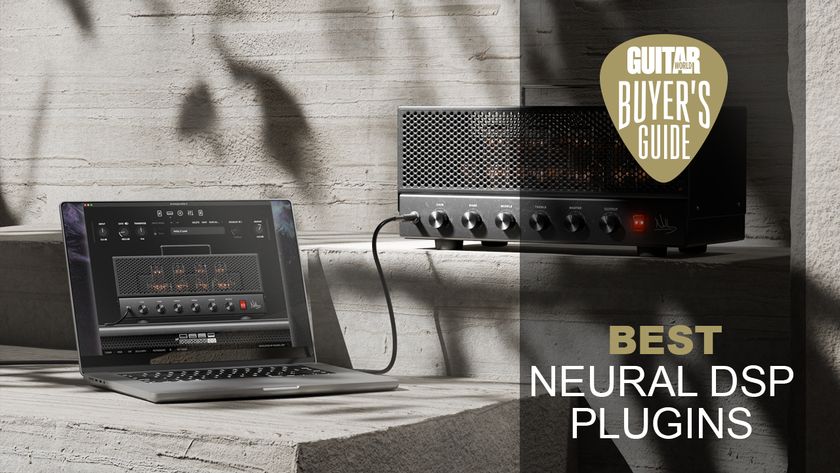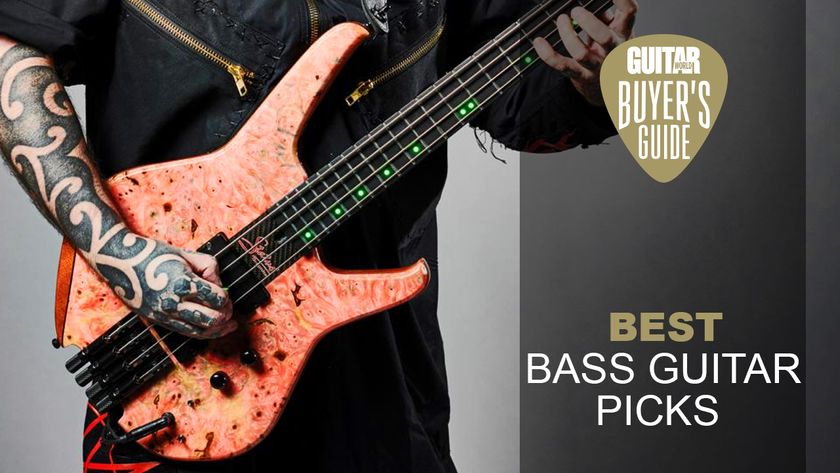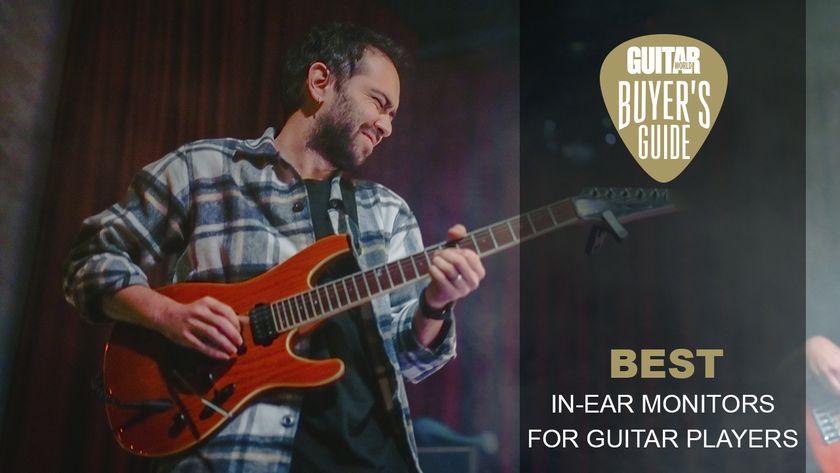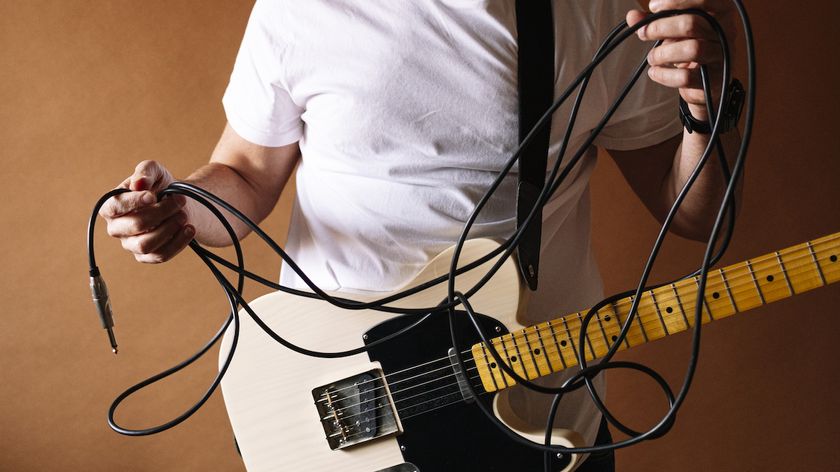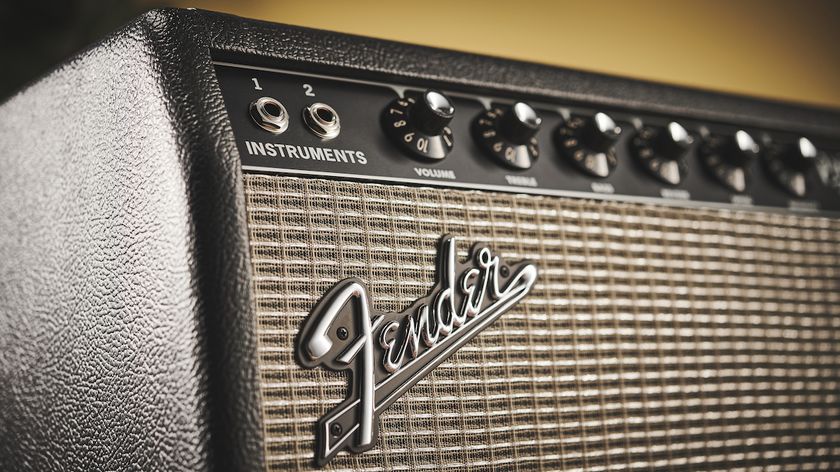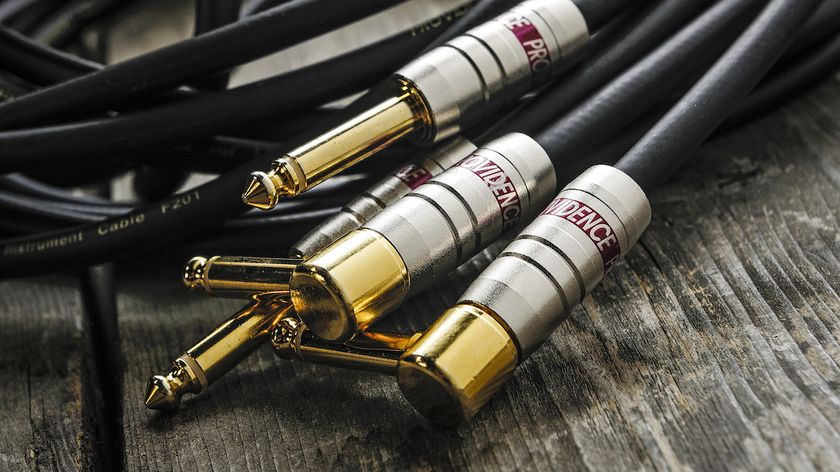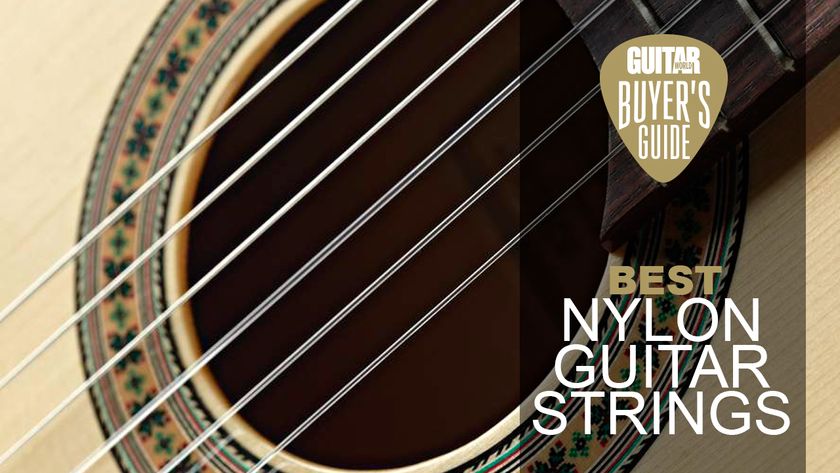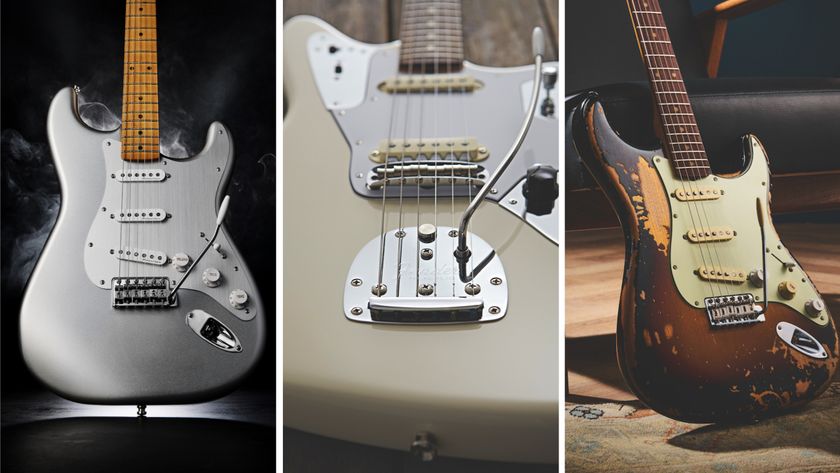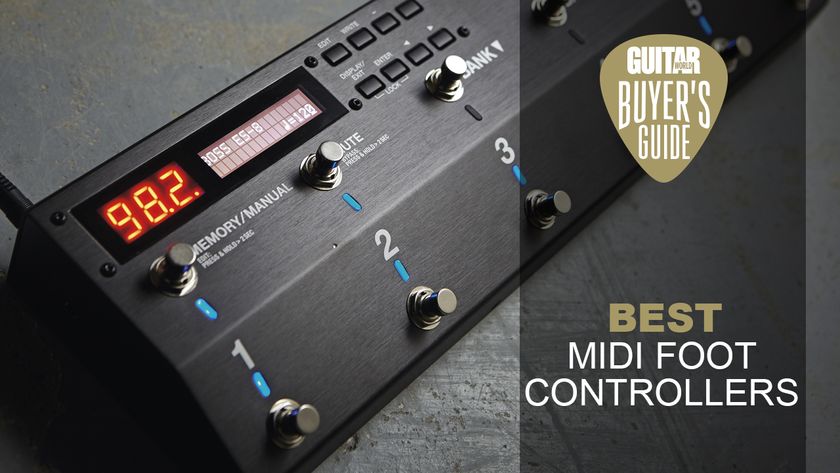Best guitar amps 2025: tube, solid-state and modeling amplifiers for all levels and budgets
These are the best combo amps and heads from Orange, Fender, Marshall, Boss, and more
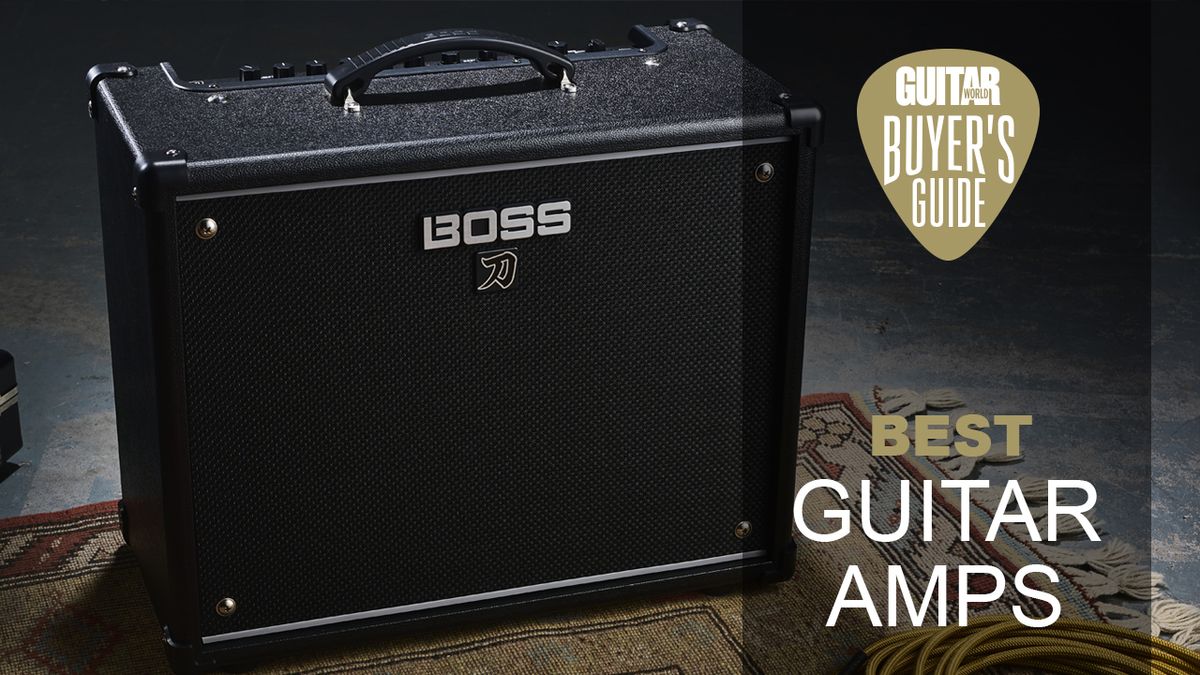
The most powerful tone change you can make to your guitar rig is upgrading your amplifier. You can have the priciest custom shop guitar, a pedalboard of boutique stompboxes, and well-practiced chops, but none of it will sound right without one of the best guitar amps.
The landscape of guitar amps is changing rapidly thanks to the rise of modeling. We're in a crossover period where the popularity of modeling amps is seeing a huge rise, while some still cling to their tube amps for dear life. While we don't believe tube amps will ever truly go away, there's no doubt that modeling amps are much more versatile, usable options for the vast majority of guitar players out there. Ultimately they sound every bit as good as a tube amp, but then they wouldn't exist in the first place without everyone's favorite valve tones.
There's a huge selection of guitar amps available in 2025, and we've put together the best of the bunch in one place for you. We've rigorously put them through their paces at home, in the rehearsal room, and on stage to ensure that only the very best make the cut. We've also tested them with single coils, humbuckers, and P90s, as well as a range of stompboxes to see how they hold up to the demands of every kind of player.
Buying an amp is a big outlay, so it's definitely not a decision to be taken lightly. To that end, we've included a huge amount of advice in this guide, including an FAQ section and a spec comparison table to help you make the right decision. So without further ado, here are the best guitar amps money can buy right now...
Our top picks
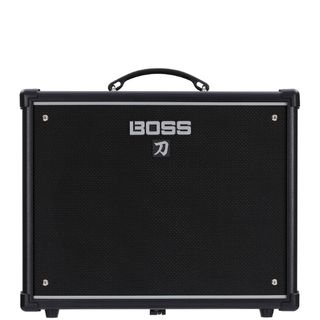
An update to one of the best-selling modeling amps of all time, the Boss Katana-50 Gen 3 provides an all-new amp model and studio-quality effects for the utmost versatility at a great price.
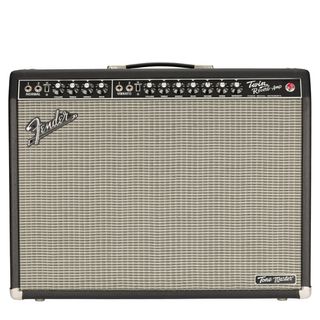
One of the best-selling amps of the past few years, the Fender Tone Master Twin Reverb delivers an incredibly realistic tube amp tone at a volume that won't annoy the neighbors.
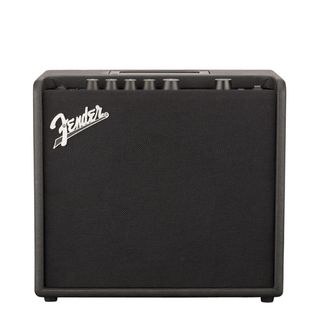
Packed with amp and effects models, the compact size and excellent sound of the Fender Mustang LT25 make it a brilliant amp for beginner guitar players - and the price isn't bad either.
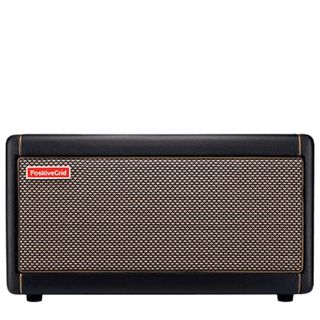
If you're looking for your first guitar amp, or you need something to practice with at home, the huge amount of sounds in the Spark 40 will do the trick. It's got pretty much every amp model you can think of, as well as bags of high-quality effects.
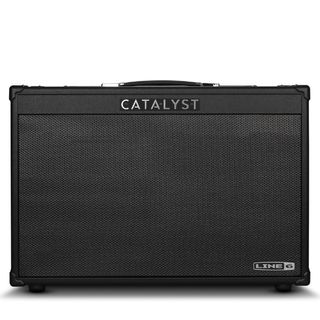
If you're after an amp that can do it all below the $500 mark, it's hard to beat the Line 6 Catalyst 200. With power for gigs, excellent amp tones, and versatile effects, it's fantastic value.
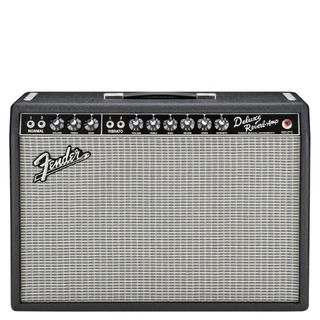
For the ultimate pedal platform amp, we'd go for the Fender '65 Deluxe Reverb. Its pristine clean tone and high headroom make it perfect for stompboxes.
Best on a budget
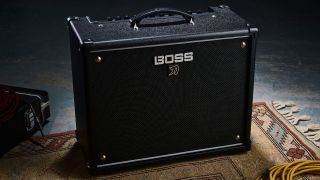
Specifications
Reasons to buy
Reasons to avoid
✅ Buy if you're on a budget: Excellent value and packed full of brilliant amp and effects models, the Katana is one of the world's most popular guitar amps for good reason.
❌ Avoid if you don't like using software: To get the best out of it you'll want to use the Boss Tone Studio software, so one to avoid if you don't like deep editing your tones.
It’s helpful for any guitarist to choose an amp that will allow them to experiment with different sounds, and the Boss Katana 50 Gen 3 certainly gives you plenty to play with. It’s not only a fantastic budget guitar amp though, the built-in effects and connectivity options make it a serious option for more seasoned players too.
This update to the Boss Katana still makes it the perfect ‘first’ or backup amp for most people. Adding a brand new amp model alongside the classic host of Boss effects, it will easily manage the step up from practice to small gig.
Hooking the Katana modeling amp up to the computer grants you access to deep editing of parameters, while we also loved the way it can record directly into a digital audio workstation via USB. The two channels let you instantly recall your favorite tones, whilst a host of connectivity options ensure it will fit seamlessly into your existing rig.
Read our full Boss Katana 50 Gen 3 review
Best for home use
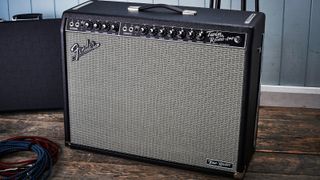
Specifications
Reasons to buy
Reasons to avoid
✅ Buy if you want tube tone at home: Sounding nigh-on distinguishable to its ridiculously loud tube-powered cousin, the Tone Master Twin is perfect for getting great tube tone at lower volumes.
❌ Avoid if you're short on space: It's lightweight compared to the original but at the end of the day, it's still a 2x12 amp so it will take up a fair bit of room.
There aren’t many guitarists out there who haven’t drooled at the thought of owning a proper Twin, but the weight and the fact you have to crank it put it out of reach for most. Enter the Fender Tone Master Twin Reverb, which aims to give you all that tube sass without the back-breaking weight or window-shattering volume.
Just like the real deal, in the first half of the volume knob, you get that slightly scooped, expansive clean tone that’s so revered. Once you’ve passed the halfway mark, we get the chime of overdrive creeping into the tone. Unlike a tube-driven Twin, you can actually turn this one to ten when used in combination with the volume attenuation switch.
Despite it technically being a modeling amp, there’s not much in the way of editing, and certainly no companion app here. There is a cab simulation that can give you the sound of a Shure SM57 on the cabinet or a ribbon microphone, which will please sound engineers everywhere. It’s an incredible piece of digital tech, and while the tone isn’t exactly the same as a vintage Twin, it’s close enough for us.
Read our full Fender Tone Master Twin Reverb review
Best for beginners
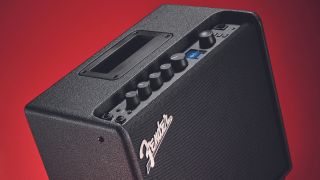
Specifications
Reasons to buy
Reasons to avoid
✅ Buy if you want your first guitar amp: With loads of great presets, compact size, and easy usability, the Mustang LT25 is a perfect match for beginner guitar players.
❌ Avoid if you want to gig: With 25 Watts this won't have enough power to compete with a drummer in a rehearsal room or deliver enough volume for the stage.
When buying a guitar amp for beginners, ultimately you’ll want something that’s easy to use but still sounds great. A modeling amp like the Fender Mustang LT25 is the perfect tool for this kind of job, as it gives beginners plenty of choices without leaving them feeling overwhelmed.
30 onboard presets ensure there are plenty of sounds to start with, from classic Fender clean tones right through to high-gain metal madness. There is a huge selection of high-quality effects from compressors, reverbs, and delays right through to pitch shifters and auto wah, which is great for helping beginners shape their signature sound.
It’s a compact amp so you can easily take it to jam with friends, and will provide enough output to play alongside another guitarist, although it won’t outshine a drum kit. Add to all these features a rather modest price point, and you’ve got yourself a killer beginner guitar amp.
Read our full Fender Mustang LT25 review
Best practice amp
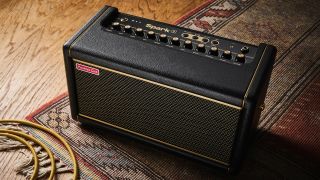
Specifications
Reasons to buy
Reasons to avoid
✅ Buy if you want great tones and practice tools: The Spark 2 features a brilliant companion app that not only delivers fantastic sounds but also gives you some incredibly useful practice tools.
❌ Avoid if you want to gig: Like the LT25, the Spark 2 doesn't really have enough power to compete with other louder instruments when playing live, so look elsewhere for a gigging amp.
The original Positive Grid Spark took the amp world by storm and since its launch, it has become the go-to practice amp for guitarists all over the globe. With the arrival of Spark 2, PG has taken things up to the next level, adding the much-requested looper, improving the sound, and delivering enhanced AI-powered practice tools.
Standing in front of the Spark 2 the sound is simply stunning with massive tones that belie its size. The speakers are now angled slightly outwards, which helps add some serious girth to the tones, especially when using stereo effects like reverb and delay. It really delivers on the realism too, and we were testing it there were plenty of grin-inducing moments from the modeled sounds.
Positive Grid has finally added a looper, letting you craft repeated sounds using your smartphone or the Spark Control X foot controller which is sold separately. It's surprisingly usable with your phone in groove looper mode though, allowing you to consistently loop based on rhythms rather than having to press a button to start a new loop.
There's also an AI tone generator accessible via the Spark App, which gives you the opportunity to create sounds based on text prompts, much like you might create imagery with Midjourney. As with all things AI it's all about the text you put in, but we were able to get some scarily accurate sounds based on just a few well-chosen phrases.
Read our full Positive Grid Spark 2 review
Best under $500
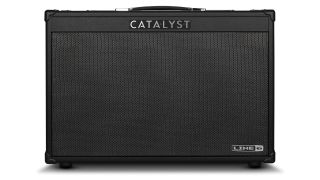
5. Line 6 Catalyst 200
Our expert review:
Specifications
Reasons to buy
Reasons to avoid
✅ Buy if you want a great value gigging amp: With plenty of power on tap, this 2x12" speaker amplifier delivers some serious heft and bags of clarity from its tones.
❌ Avoid if you like lots of built-in effects: There's a fantastic selection of effects here but unfortunately you can only use two at a time, and one of those has to be a reverb.
Presumably born to rival the all-conquering Boss Katana, the Line 6 Catalyst 200 is a powerful modeling amp that gives you a huge amount of features for just shy of the $500 mark. If you’re looking for an amp that will deliver quality tones and is gig-ready, this is as good as it gets at this price point.
The Catalyst 200 is based on 6 amp models, consisting of clean, boutique, chime, crunch, dynamic, and high gain. Based on classic designs from Fender, Marshall, Vox, and others, the two 12-inch speakers allow it to deliver pristine sounds that offer excellent clarity and pure power when you crank the volume.
Line 6’s effects have always been great, and here you’ll find an excellent selection from the HX series with delay, chorus, reverb, phasers, and many more. One criticism is that you can only have two at one time, and one of those must be a reverb, so if you like making crazy effects chains, this might not be the one for you. If you’re using your own pedals though, that won’t be an issue.
Read our full Line 6 Catalyst 100 review
Best tube amp
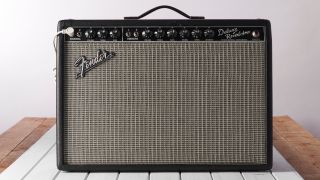
6. Fender '65 Deluxe Reverb
Our expert review:
Specifications
Reasons to buy
Reasons to avoid
✅ Buy if you want the ultimate tube amp: One of the most recorded amps ever, the Deluxe Reverb delivers sumptuous tube tones that make it a perfect pedal platform and recording amp.
❌ Avoid if you want high gain: Some people prefer to get their gain directly from the amp, so whilst this sounds great, it won't get you into metal territory like some of the other amps here.
One of the most popular amplifiers ever made, the original Fender ‘65 Deluxe Reverb has appeared on countless records over the years. It’s an iconic amplifier and while vintage versions are prohibitively expensive, this reissue version keeps all that original mojo whilst remaining accessible for the majority of guitar players who want one of the best tube amps.
If you want a pedal platform this amp excels, requiring a lot of gain before it hits that sweet overdrive. It’s pristine clean territory that’s super versatile, whether you’re slamming it with fuzz pedals or playing jazz licks with it clean. It’s great for recording too, as you don’t need to crank it as much as a certain classic 2x12 to get usable tones from it.
You get two channels with two inputs each, giving you plenty of flexibility in how you shape your sound. The tube-driven reverb and tremolo sound absolutely sublime, allowing you to dial in tones from subtle to spacious, making this one of the most versatile amps money can buy.
Read our full Fender '65 Deluxe Reverb review
Best solid state amp
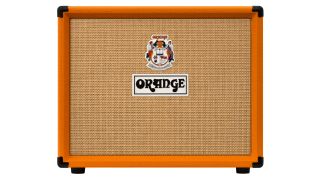
Specifications
Reasons to buy
Reasons to avoid
✅ Buy if you want great tone without the hassle: Sounding every bit as good as the tube-equipped Rockerverb it's based on, the Crush 100 gives some of the best non-tube guitar tones we've ever heard.
❌ Avoid if you like built-in effects: There are no additional effects here to speak of, so you'll need a pedalboard if you want to add delays, chorus, and reverbs to your tone.
For those guitarists who want a great-sounding tube amp but lack the budget, the Orange Super Crush 100 is about as close as you’ll get without splurging on the real deal. It uses a JFET preamp design paired with the same power amp as found in the popular Orange Pedal Baby to create some super-realistic tube tones.
With two channels at your disposal, you’ll get everything from articulate clean tones to metal distortion, and there’s plenty of headroom on tap to push the amp with your favorite pedals. The tone is very reminiscent of the classic Orange Rockerverb amps, but that doesn’t mean it isn’t versatile thanks to the three-band EQ.
One thing that may confuse newcomers are the pictures that replace your more typical text labels on the amp controls but a glance at the manual or a quick Google search can help you overcome this. The combination of channel controls and master controls make this amp super flexible for any use, and one of the best solid state amps we’ve ever played.
Read our full Orange Super Crush 100 review
Best combo amp
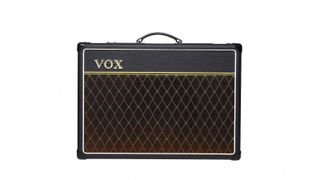
8. Vox AC15 C1
Our expert review:
Specifications
Reasons to buy
Reasons to avoid
✅ Buy if you want vintage guitar tones: This Vox delivers that classic 'chime' amp tone and is perfect for those who love vintage tube amp tones. The onboard tremolo is fantastic too.
❌ Avoid if you want high gain: Whilst you can get overdrive out of this amp pretty easily, it won't get you all the way to high-gain, metal territory.
Launched over 60 years ago, the Vox AC15 is the veteran of the pack in this best guitar amps guide. Yet still, people gravitate towards that famous grille, lured in by the promise of one of the guitar world’s most recognizable tones as utilized by everyone from the Beatles to Brian May.
This amp has a wide tonal range, going from the signature sparkling clean right through mid-heavy compressed overdrive. The highs are complex yet articulate whilst the low-end response is punchy and dynamic, sounding equally great with both single-coil and humbucker-equipped guitars.
The onboard tremolo is particularly delicious, with speed and depth controls allowing you to dial in everything from a slow gentle warble to a more choppy, gated effect. You also get a spring reverb with a single level control, letting you bask your guitar tone in some surf guitar sounds. As far as the best combo amps go, it's hard to beat this one if you're into classic tones.
Best for metal
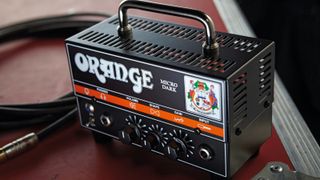
9. Orange Micro Dark
Our expert review:
Specifications
Reasons to buy
Reasons to avoid
✅ Buy if you want a compact metal amp: The Micro Dark packs some serious metal heft in its tiny enclosure, making it great for gigging guitar players who love metal.
❌ Avoid if you prefer tube amps: This is a hybrid amp that only features tubes in the preamp stage, so some tube purists may not get along with it.
The Orange Micro Dark is one of the British amp manufacturers' most popular offerings and one of the best metal amps we've ever had our hands on. Mixing great tone with compact portability plus some excellent connectivity options, it’s incredible value for money and worthy of a place on any guitarist's backline.
Orange isn’t kidding around with the ‘micro’ tagline, this thing is positively tiny and weighs the same as some practice amps. It gets absolutely dwarfed by a 4x12 cabinet, yet somehow manages to output a sound level that will have audiences running quickly reaching for their earplugs. It’s got that classic Orange midrange in spades with a lovely clean channel and gain that goes from classic rock right through to djent.
As well as outputting the amp through a traditional speaker out, it also has an emulated speaker output so you can DI it straight to the desk, or utilize it as part of your home recording setup. This output doubles as a headphone out too, so silent practice is on the cards as well, completing this brilliant amplifier's comprehensive feature set.
Read our full Orange Micro Dark review
Best for jazz
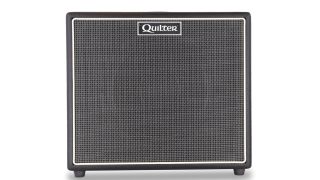
9. Quilter Aviator Mach 3 Combo
Our expert review:
Specifications
Reasons to buy
Reasons to avoid
✅ Buy if you want loud clean tones with lots of headroom: Delivering 200W of tone, the Aviator Mach 3 gives brilliant clean tones with lots of variety, making it great for jazz and other styles that need a clean base.
❌ Avoid if you need high gain: The dirt setting isn't the best around, so if you need higher gain settings direct from your amp this won't do the job.
If you’re playing jazz guitar you’ll need a great clean amp and whilst the more typical choices would be a Fender tube amp or Roland Jazz Chorus, we’ve opted for a left-field choice in the Quilter Aviator Mach 3. For us, its pure clean power matched with super light weight makes it the perfect choice for jazz players, gigging or not.
The volume and clean headroom on the Mach 3 are stupendously good. It will easily keep up with your heavy-handed drummer and do the business in big band setups too. The six amp voices give you plenty of flexibility to blend in - or stand out - depending on your use case, and the Celestion speaker delivers a lovely, balanced guitar tone.
You get two channels that are identical, so you can set up slightly different amp voices or completely different clean and dirty tones, both of which are available via a footswitch that’s sold separately. Two separate inputs mean you can run two different instruments via the same amp which could be handy in a pinch, and you also get some quality effects with reverb and tremolo. The only thing that lets this amp down for us is the distortion effect, so you’ll want to use an overdrive pedal if you want dirt tones.
Best pedal amp
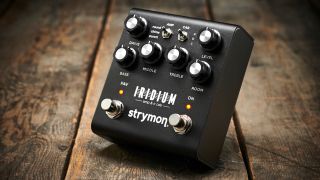
Specifications
Reasons to buy
Reasons to avoid
✅ Buy if you want a pedalboard-friendly amp: Strymon's ever-popular pedal amp is perfect for pedalboards thanks to its compact size and powerful controls that mean no messing around with dedicated apps or software.
❌ Avoid if you don't have good monitoring: Using this live you'll need a good FRFR speaker or fantastic monitoring, so one to avoid if the places you play don't have a good PA system.
We’re firmly in the modern age now, which means it isn’t necessary to lug a traditional guitar amp around with you if you want to play shows. It’s been around for a while, but the Strymon Iridium is still one of the best pedal amps out there, thanks to its great sounds and ease of use.
The Iridium gives you three classic amp sounds with Fender, Vox, and Marshall-inspired sounds that are easily tweakable thanks to real knobs on the pedal front. There is an app for those who like to delve into that kind of thing, but real amp users will love the tactile feel of proper controls here.
You get 9 preloaded cabinet impulse responses from 1x12 to full-on Mesa 4x12 tones, so there’s plenty of flexibility available when dialing in your tones. You can also load your own IRs too, or just bypass the cab model completely if you want to. A built-in room reverb provides some ambiance for that amp-in-a-room tone, and there’s plenty of connectivity to fit most use cases too.
Read our full Strymon Iridium review
Best amp modeler
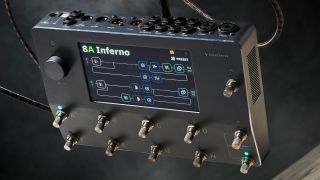
Specifications
Reasons to buy
Reasons to avoid
✅ Buy if you want to get rid of your amp entirely: More than just a multi-effects pedal, the Neural DSP Quad Cortex will replace your entire rig, from amp to cab, to pedalboard.
❌ Avoid if you don't like tweaking: To get the best out of it you'll need to spend some time setting up and tone tweaking, so if you're not good with tech or don't like using software, best to avoid this one.
Neural DSPs Quad Cortex is one of the best amp modelers we’ve ever played, but it does a whole lot more than that too. Capable of capturing amp and pedal tones and acting as an audio interface, not only is it a fantastic replacement for your traditional amplifier, but a whole new way of running your rig.
The pure variety of sounds available is incredible. Pretty much any amp you can imagine features, all captured pristinely and realistically. Not only that, but you can take your existing rig and model it into your unit, so your signature sound will remain the same no matter where you go.
We love the large LCD display which makes changing and tweaking patches a breeze. The footswitches that double as rotary controls are ingenious, and have since been copied by many other manufacturers. The level of connectivity is fantastic too, with every eventuality covered whether you want to use a hybrid amp and modeler rig, use it purely for recording purposes, or just replace your live rig entirely.
Read our full Neural DSP Quad Cortex review
Spec comparison
| Amp | Type | Watts | Speaker |
|---|---|---|---|
| Boss Katana 50 Gen 3 | Modeling | 50 | 1x12" |
| Fender Tone Master Twin Reverb | Modeling | 200 | 2x12" |
| Fender Mustang LT25 | Modeling | 25 | 1x8" |
| Positive Grid Spark 2 | Modeling | 50 | 2x4" |
| Line 6 Catalyst 200 | Modeling | 200 | 2x12" |
| Fender '65 Deluxe Reverb | Tube | 22 | 1x12" |
| Orange Super Crush 100 | Solid State | 100 | 1x12" |
| Vox AC15 C1 | Tube | 15 | 1x12" |
| Orange Micro Dark | Hybrid head | 20 | N/A |
| Quilter Aviator Mach 3 | Solid State | 200 | 1x12" |
| Strymon Iridium | Modeling | N/A | N/A |
| Neural DSP Quad Cortex | Modeling | N/A | N/A |
Also consider
The guitar amps listed above are for us what you should be spending your money on. There are many different use cases when it comes to guitar amps however, so if you didn't find what you were looking for here are some more options that we rate highly.
PRS MT15 Mark Tremonti
Tube head | 15W | JJ EC83S, 6L6
The MT 15 follows the standard lunchbox amp blueprint, packing in two channels and switchable output power to make for an ideal tool for practice, recording, and small shows. It’s clearly towards higher gain fans, with the 6L6 power amp tubes dealing up plenty of saturation
★★★★½
Read more: PRS MT15 Mark Tremonti review
Marshall DSL40CR
Tube combo | 40W | 4 x ECC83, 2 x EL34 | 1x12” Celestion V-Type
The Marshall DSL40CR aims to give you the classic sound of a Marshall 4x12 in a much more usable format. Tonally versatile and portable, the DSL40CR is an all-tube tone monster that offers excellent value for money for gigging guitarists.
★★★★½
Read more: Marshall DSL40CR review
Blackstar HT Club 40
Tube combo | 40W | ECC83, EL34 | 1x 12” Celestion
The Blackstar HT Club 40 has been the standard for mid-priced tube amps for a while now thanks to its foot-switchable voices. These voices offer an American or British-leaning tonality, meaning you essentially get four amp tones in one.
★★★★½
Read more: Blackstar HT Club 40 review
Victory V40 The Duchess
Tube head | 40W | 12AX7, EL34
Despite its small size, the Victory V40 can produce some serious noise. It’s a 40-watt, single-channel tube head that is capable of both US and UK style tones, and thanks to its significant clean headroom, is an exceptional pedal platform too.
★★★★★
Read more: Victory V40 The Duchess review
Buying advice
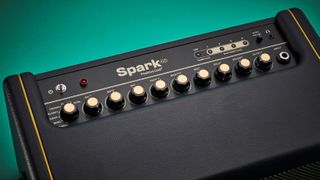
Guitar amplification is based on three building blocks at its core – preamp, power amp, and speaker. The preamp shapes the sound, the power amp brings it up to the level required to drive the speaker, and the speaker pumps out the glorious tone.
Should I buy a tube, solid state or digital amp?
First, there's the question of whether the amp is tube, solid-state, or a digital amp modeler. With tubes, you’re getting the benefits of a physical reaction in your playing: genuine electrical artistry spilling from a row of glowing glass tubes. Tubes deliver a rich harmonic warmth and dynamism that people still flock to, despite all of the advances in digital and modeling technology. If you’re driving the power amp section of your amp, playing at stage volume, tubes really come into their own in a way that digital and modeling amps can’t really compete with.
Where modeling comes up trumps is through sheer variety and instant gratification. Modern modeling amps can pack in super-accurate recreations of literally hundreds of different models, from all genres, in a way that gives the user a near-infinite tonal palette. As well as the amps themselves, modeling amps also give you plenty of options to tweak your cabinets and speakers, as well as typically having a whole host of built-in effects. This makes them great options for players in cover bands who need lots of different sounds, as well as beginners who are searching for their signature sound.
The line between solid-state and modeling amps has blurred in recent years, but typically a solid-state amp won’t try to emulate different sounds like their digital cousins. Despite having a bit of a bad rep amongst tonal purists there’s no denying that class D power amps and the like are both small and efficient. They tend to lean towards cleaner tones, which makes them fantastic pedalboard-friendly amps, but very few have overdriven and distorted tones that can compete with a high-end modeler or tube amp.
Do I want a combo or a head?
Combo amps combine the pre-amp, power amp, and speakers in a single unit, whereas heads require external speakers to use. The benefit of a head is being able to run more speakers if necessary, but in an age of venues shut down for noise complaints, where even your local bar has a decent PA, the need for extra volume isn't as relevant. Also if you use a head on the road and don’t bring your own cabinet, you’re at the mercy of the dubious quality of the venue’s own cabs.
Combo amps are great if you want to take your carefully crafted sound out and about on the road with you. You’ll know when you rock up to the show that your exact sound will be pumped out to front of house. However, this comes at a cost, as combo amps are typically very heavy, meaning lugging them up those narrow venue stairs might make you lust after that ‘lunchbox’ head.
Is guitar amp wattage important?
Yes, it is. More wattage, for the most part, means more volume. There is however some nuance to this. The perceived volume of a tube amp is much louder than that of its solid state or modeling equivalent because of some electrical wizardry that we won’t go into here. Put in simple terms, it means that a 10-15 watt tube amp will be equal to its 50-watt digital equivalent. So definitely bear that in mind before you pull the trigger on that 100-watt tube head and 4x12 combo you’ve got your eye on.
How much gain does my guitar amp need?
Finally, you'll want to think about your gain requirements. If you're a pedalboard user, you may well already have an array of overdrive and distortion pedals, and you're just looking for a clean platform to amplify and complement those tones. However, for some players – especially those of a heavier persuasion – there's simply no substitute for a high-gain amp, which produces a richer, more 3D character than many stompboxes. Be sure to bear in mind the number of channels an amp possesses, especially if you're looking to switch on the fly from clean to distortion.
How we test the best guitar amps
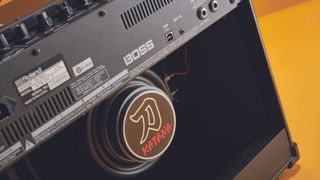
When it comes to testing, there are a few things we like to do to put an amplifier through its paces. That said, we must first mention that as guitar amps come in various shapes and sizes, how we test them can differ, depending on the amplifier's intended use. For example, volume and projection are massive considerations when it comes to amps designed to be played on stage or in a rehearsal room, but not so much for home use practice amps.
What shouldn't change between home and live amps is the build quality, and that's the first thing we look for. For us, all amps should be well made and sturdy, regardless of their application. In our opinion, guitar amps should feel robust and able to withstand anything you throw at them, and the controls should be smooth, with just the right amount of resistance.
To test the amps out tonally, we'll start where most guitarists start, everything straight up the middle. This usually allows us to hear the amp at its most sonically honest. We'll then dive in and start shaping the sound to how we like it, paying careful attention to the sweep of the EQ controls in particular. We'll also be sure to test the amp at both ends of the gain spectrum, from as much saturation as we can get to as clean as possible.
If an amp has any other features, such as effects or attenuators, we'll be sure to go through them as well, making sure we've tested every last extra onboard.
Read more about our rating system, how we choose the gear we feature, and exactly how we test each product.
Related buyer's guides
You can trust Guitar World
- The best tube amps under $1,000: combo amps and heads
- Practice in peace with the best headphones for guitar amps
- Turn it up while keeping it down with the best headphone amps for guitar
Get The Pick Newsletter
All the latest guitar news, interviews, lessons, reviews, deals and more, direct to your inbox!
Chris Corfield is a journalist with over 12 years of experience writing for some of the music world's biggest brands including Orange Amplification, MusicRadar, Guitar World, Total Guitar and Dawsons Music. Chris loves getting nerdy about everything from guitar gear and synths, to microphones and music production hardware.
- Alex Lynham
- Matt McCrackenJunior Deals Writer
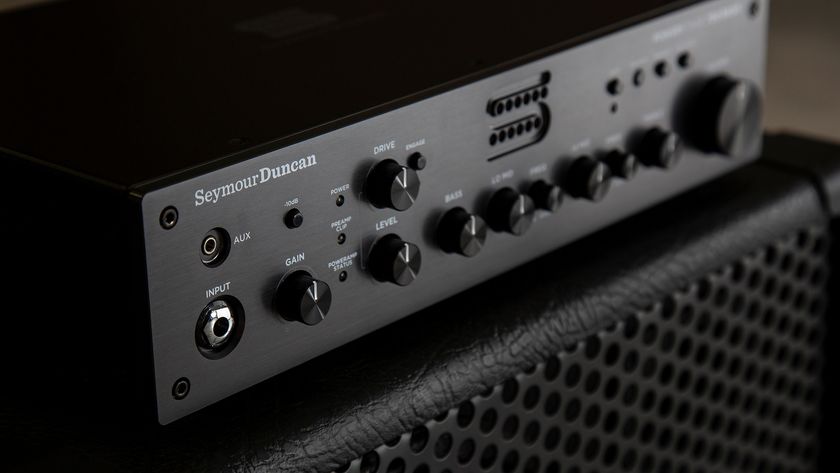
“Our goal is to stay at the forefront of amplification innovation”: How Seymour Duncan set out to create the ultimate bass amp solution by pushing its PowerStage lineup to greater heights
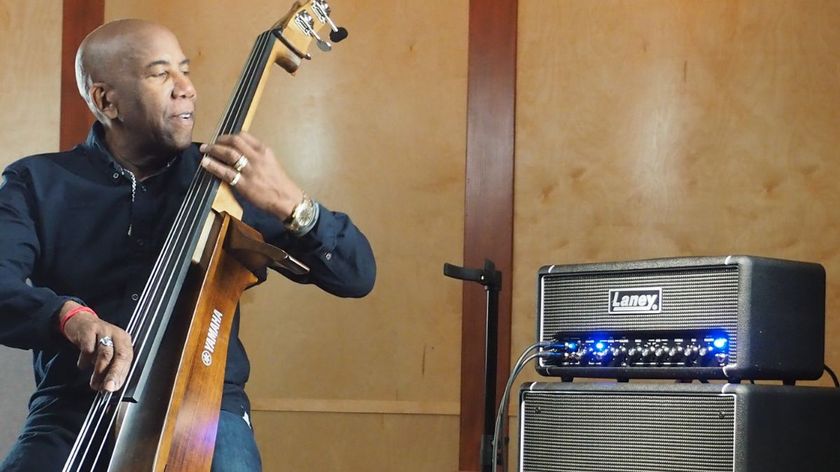
“It’s a game-changer for me”: Laney and Nathan East team up for a versatile signature bass head that ends a 40-year wait for the session legend
